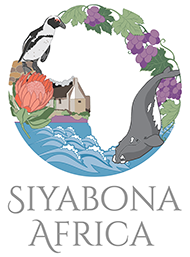
Myths & Legends of Table Mountain
Table Mountain has been likened to a fortress, a sleeping goddess, the stairway to heaven, guardian of Cape Town, a warrior and watcher of the south. It seems to fit all of these descriptions and lends itself to being the central character in many strange tales from the furthest south-west point in Africa.Dragon of the Sea
According to African legend, Tixo (God of the Sun), and Djobela (Earth Goddess), conceived Qamata who created the world. But the Great Dragon of the Sea, was so jealous that he fought with Qamata to try and stop him forming dry land. In the battle Qamata was badly crippled, but the Earth Mother Djobela came to his aid by creating four mighty giants to guard the far corners of the earth. Djobela placed the biggest and strongest giant at the gateway to the south where Cape Town now lies.After many terrible battles with the great Dragon of the Sea, the giants were killed one by one. But before they died, they requested that the Earth Mother turn them into mountains, so that even in death, they could guard the world. And so, the greatest giant of all - Umlindi Wemingizimu - became Table Mountain, the watcher of the south.Desmond Tutu has his own version of this story which he told to Carrie Hampton for her book 'Table Mountain to Cape Point': In the creation story we are told that when God created the earth and all living things, he sat back and admired his handiwork. But I believe he looked at the southernmost tip of Africa, where the two great oceans meet, and said, 'Mmmm.. I should do something special here.' And he took the mountains and the oceans and the plants and the animals and created a southern gateway fitting for the most vibrant, most diverse, most exciting, most wonderful continent in all the world." He is talking about Cape Town, the city where he lives and a place once seen and never forgotten.Mountain Ghosts
With such beginnings, it is hardly surprising that other strange tales cling to this iconic landmark that looks out over the South Atlantic Ocean. There are a few mountain ghosts like Aintjie Somers, a slave who worked herself to death and came back to avenge her hard life in the guise of a gnome-like spirit with poltergeist tendencies. The old saying 'Be good or Aintjie Somers will get you,' is still used today in the Cape to try and induce good behaviour in children.The ghost of Verlatenbosch (Bush of the Forsaken) is a mournful Table Mountain tale of a Governor's son, infected with leprosy by a vengeful citizen who held a grudge against the Governor. The boy was tempted into using a flute that had been used by an old leper whose shrunken lips produced the most beautiful tunes. Soon the youth contracted incurable leprosy and was forced to live in isolation in a lonely hut in the forest where he died. When evening falls, the haunting sounds of this flute may be heard in the breeze that whispers through the trees on the slopes of Table Mountain.Apparitions are also a feature of Table Mountain and back in the 1920s the enlightened Theosophist and prolific Theosophical author, Geoffrey Hodson, wrote about the Table Mountain spirits that he encountered. He described seeing these Mountain Gods as like entering a realm of light.Hodson was no artist and commissioned his friend Ethelwynne Quail, to illustrate his shimmering visions. She depicted their auras and wavelike layers, which according to Hodson, are forces flowing at their full power, producing great brilliance and dazzling brightness.There are several people in Cape Town who have confirmed seeing these apparitions and given the right place, right time and a little imagination, you may well be able to see them for yourself. Kirstenbosch Botanical Gardens is a good place to start looking, as Light Beings are known to inhabit the mountain slopes here.According to the ancient Chinese philosophy of Feng Shui, Cape Town is the perfect city. This is because of its auspicious configuration in the shape of an armchair; protection from Table Mountain to the rear, and Lion's Head and Devil's Peak acting as the armrests. The city itself sits in an energy-filled bowl to the front. Add the wealth-creating properties of water and Robben Island to slow down the qui (energy) before it hits land, and you have the ultimate Feng Shui city.More stories about Table Mountain and the oceans of the Cape are found in the coffee table book from which this article was adapted; 'Table Mountain to Cape Point' by Carrie Hampton. Stunning original photographs by Andrew McIlleron, published by Struik and available in bookshops or autographed copies from the author.
© Carrie Hampton. Not to be reproduced without permission.
